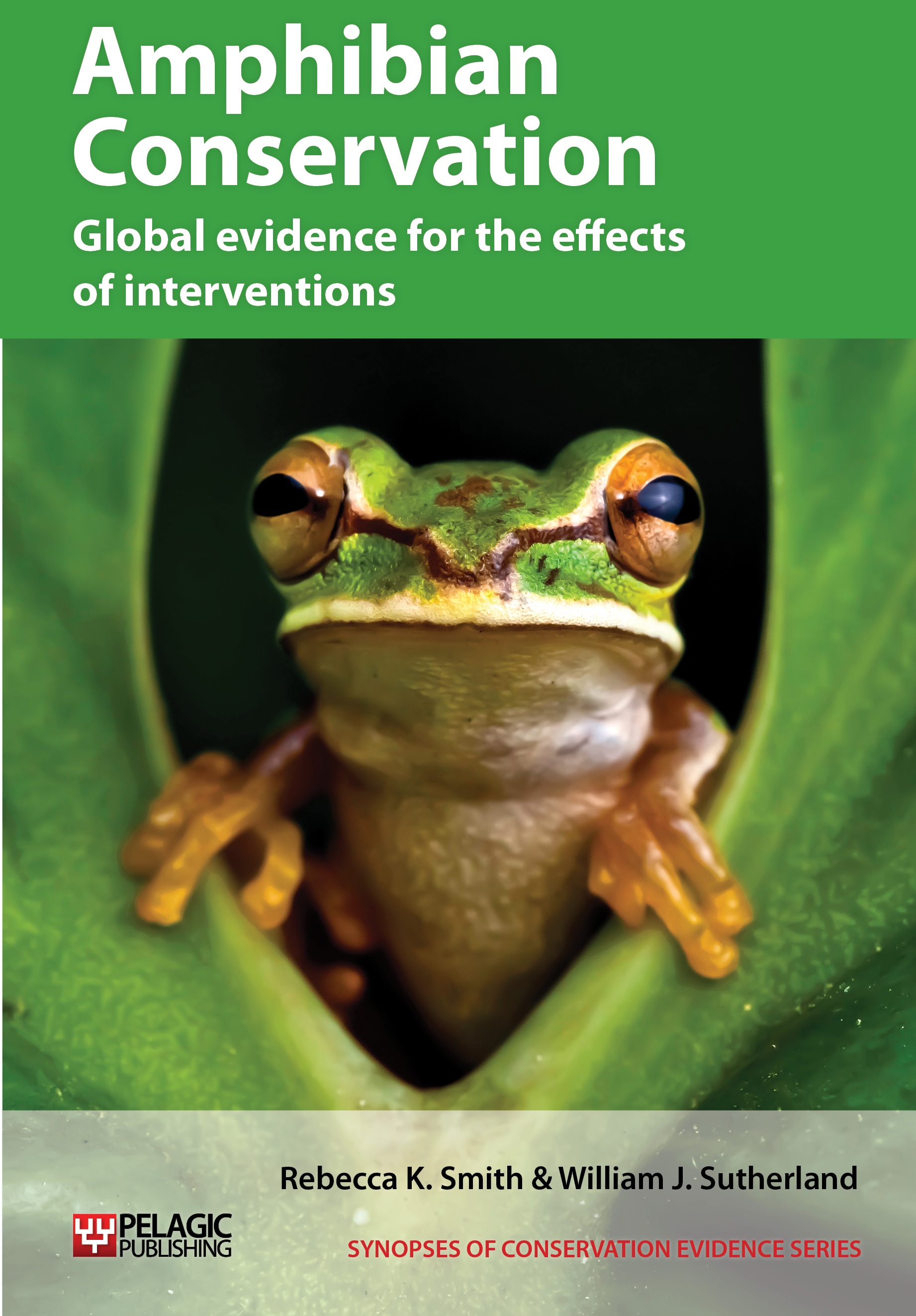Raise awareness amongst the general public through campaigns and public information
-
Overall effectiveness category Likely to be beneficial
-
Number of studies: 5
View assessment score
Hide assessment score
How is the evidence assessed?
-
Effectiveness
60% -
Certainty
51% -
Harms
0%
Study locations
Supporting evidence from individual studies
A replicated, before-and-after study in 2001–2004 of 16 coastal meadows in Estonia (Rannap 2004) found that raising awareness, along with habitat restoration and translocation, increased numbers of natterjack toads Bufo calamita. Toad numbers increased on one island, declines were halted on two islands and one of 13 translocated populations was recorded breeding. Information on the natterjack population and conservation management was published, information boards put up and a documentary film on coastal meadows produced. In 2001–2004, habitats were restored on three coastal meadows where the species still occurred and on 13 where natterjacks could be reintroduced. Two hundred volunteers helped during 14 work camps. Restoration included reed and scrub removal, mowing (cuttings removed) and implementation of grazing. Sixty-six breeding ponds and natural depressions were cleaned, deepened and restored. Approximately 30,000 tadpoles from isolated quarry populations were translocated to the 13 restored meadows.
Study and other actions testedA before-and-after study in 2002–2007 of a project to develop nature tourism at Lake Xochimilco, Mexico (Bride et al. 2008) found that activities such as training local boatmen in environmental interpretation increased visitor awareness of axolotls Ambystoma mexicanum. The proportion of visitors that knew what an axolotl was increased (from 35% to 57%), as did knowledge about the species (1–11% to 8–35%). Once boatmen had attended workshops, visitors regarded boatmen, rather than videos as the best source of information about the lake and its wildlife (pre-workshop: 10 vs 55%; after: 37 vs 18% respectively). Fifty-five boatmen completed workshops and 64 other locals attended conservation or souvenir production workshops. Content was informed by baseline data collected on visitation, souvenir markets and from boatmen. Press releases, brochures, souvenirs and an art calendar competition (1,300 entries) were also used to raise awareness. The profile of the project was also raised within the Mexican and UK government. A survey of 11 boatmen was undertaken for one month following training.
Study and other actions testedA study in 2001–2008 of raising awareness about amphibian conservation in Taiwan (Chang et al. 2008) found that holding press conferences to publicize frog conservation did not appear to help a green tree frog Rhacophorus arvalis project. Authors felt that the public was only interested in ‘good news’ stories about animals and that the media only focused on political issues. Press conferences were held and news released about the progress of the conservation project to stimulate concern and interest amongst local people. Radio, television, the Internet, web sites, e-mails, blogs and magazines were used to increase awareness. Documentaries and special programmes for educating the general public were also broadcast.
Study and other actions testedA study in 1999–2012 of the Amphibian Rescue and Conservation Project in Panama (Gratwicke 2012) found that a large audience was reached via a multi-media award-winning awareness campaign. The website, in Spanish and English, received approximately 50,000 new visitors annually. In addition, the project engaged approximately 5,000 Facebook fans and 1,500 Twitter followers. The network of supporters provided a resource for fundraising and recruitment of volunteers. The campaign also resulted in about 50 news stories about the project each year, a weekly blog and a documentary film. In addition, legislation was passed in 2010 declaring August 14th National Golden Frog Day in Panama. In 2009, there was a legal resolution to draft and implement a national action plan for the conservation of the amphibians of Panama.
Study and other actions testedA study in 2012 of the Million Ponds Project in England and Wales, UK (Million Ponds Project 2012) found that 1,023 ponds were created, over 60 organizations were involved and more than 1,016 people were trained in pond creation at 57 events. In 2008–2012, the project team worked with landowners and managers to create the 1,023 ponds for rare and declining pond species. There was good coverage of the project in national and regional media and articles in more specialist publications. The aim of the 50-year initiative was to change attitudes so that pond creation becomes a routine activity in land management practices. Policy makers and the media were targeted to help raise awareness. Pond creation and management training courses were provided to partner and non-partner organizations. Over 50 factsheets were produced for an online toolkit and funding for pond creation was also provided.
Study and other actions tested
Where has this evidence come from?
List of journals searched by synopsis
All the journals searched for all synopses
This Action forms part of the Action Synopsis:
Amphibian Conservation
Amphibian Conservation - Published 2014
Amphibian Synopsis





)_2023.JPG)














